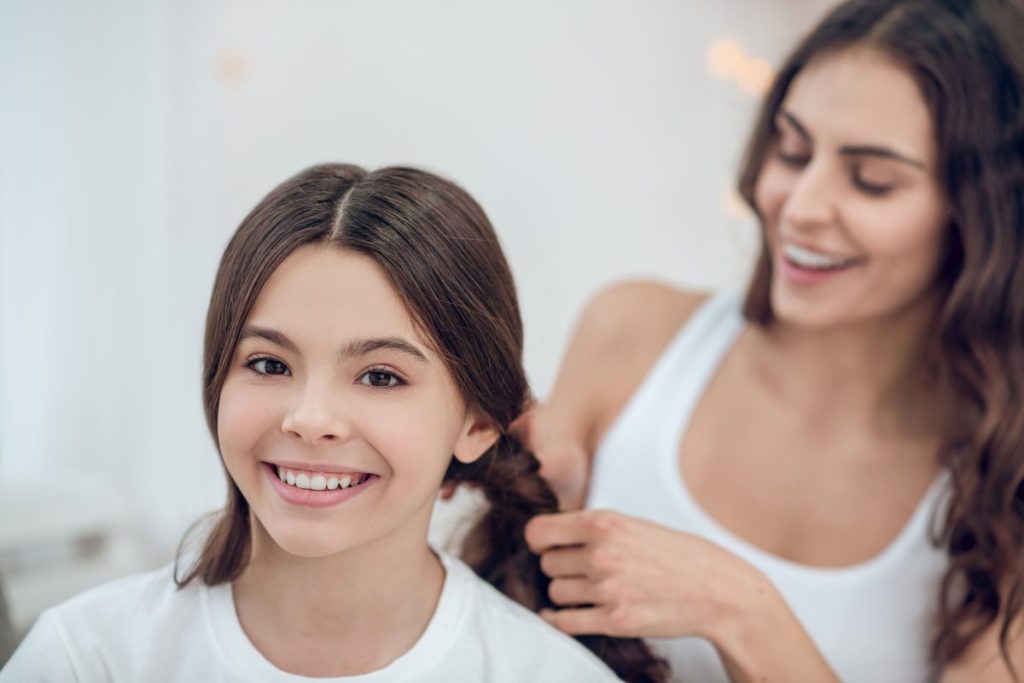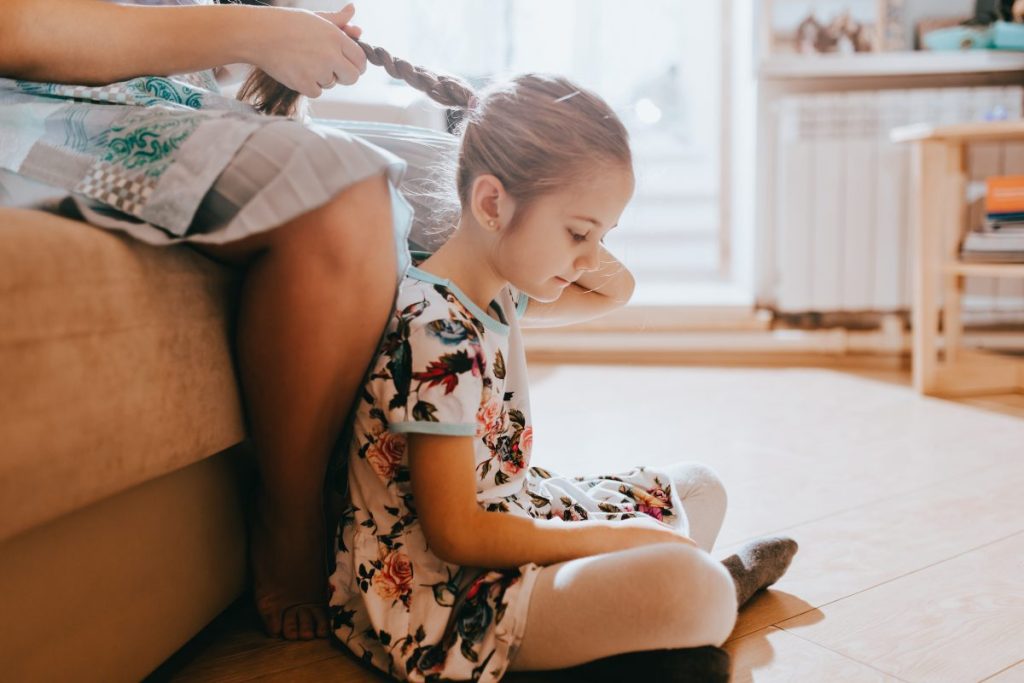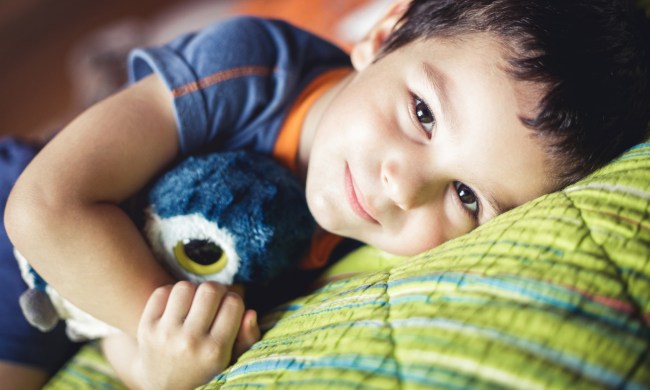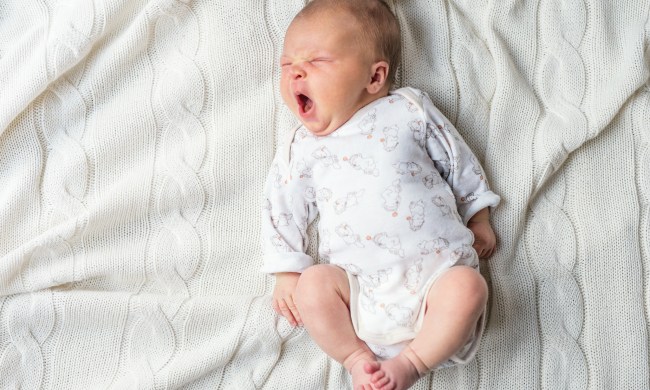Hairstyling for kids can involve way too many tears for something that’s a daily task. If you’re pulling at her hair and causing her pain, we have some tips for how to do kids’ hair without the drama. Make hairstyling a time for smiles and excitement for a cute look instead of crying about pain, so you can both enjoy this as bonding time instead of a chore. Start from a young age with a foundation of brushing baby’s hair from the start, and the tradition will grow from there.

Hairstyling for kids
Hold the root of the hair
Brush and style hair section by section. Gather a section with one hand and hold on to the highest part as you brush the rest with the other hand. You’ll feel the tension on your holding hand as you brush. Instead of pulling at the root of the hair, your holding hand will keep the scalp from feeling the tugs. You can have her hold the base of the section you’re styling if you need both hands for something like a braid.
Use a detangler spray
If you spray hair first, whether wet or dry, with a detangler spray, it can really work magic for a smooth brushing experience. Just a spritz can give you a tear-free time, and it’s really worth it. Some have nice, natural scents added, and you can even tell your daughter it’s unicorn spray or princess spray or something to make her feel special and look forward to hair brushing.

Learn about her hair type
There are over 10 types of hair, from straight to curly with names like 2C and 4B. If your daughter has curly hair, brushing, washing, and styling it will need to be done differently than if she has straight hair. Beyond just straight or curly, the type of curls she has is important to figure out because they all have different recommended care. Brushing too roughly can damage some, humidity affects them differently, some do well with protective hairstyles, and some need more moisture, conditioners, or oils. Once you identify the accurate type, you can look up the appropriate way to take care of it.
Use a wet brush on wet hair
For many hairstyles, wetting the hair first, either right after washing or with a spray bottle when it’s time to do some styling can help make it easier to brush and to style. Using a wet brush also helps give a soft feeling on the scalp, and they come decorated with any cartoon character you can imagine. Brushing hair right out of the bath or shower is easiest not just because the hair is already wet and was recently conditioned, but also because not letting it dry unbrushed will prevent tangles in the first place.
Go to a stylist
There are certain cases when you should go to a hair salon, like for professional de-matting. But if you’re not dealing with a condition like matting, it could still help. If hair brushing has become a point of contention between you and your child, give both of you a break by treating your daughter to a salon day. Having her hair brushed and styled professionally will have her feeling fancy and could get her feeling like hair care time is fun time. The conditioners the stylist uses could also help with detangling back at home, and the stylist may also have advice for how to handle any issues you’re having. You could both get your hair done at the same time for a mother-daughter outing, showing her you have to take care of your hair, too, and it’s part of being a grown-up.
Use styles she likes
It’s her hair, so as soon as she can tell you what she likes and doesn’t like, listen to her. Let her look on Pinterest with you for styles she likes. This is an important part of her feeling confident in her own body, just like choosing her own clothes. Help her carry out the styles she wants until she’s old enough to do it herself. Forcing a style on her will make the whole process harder, and if you can get buy-in about her being excited for an Elsa braid or Moana curls, that will help things go smoothly without tears.



